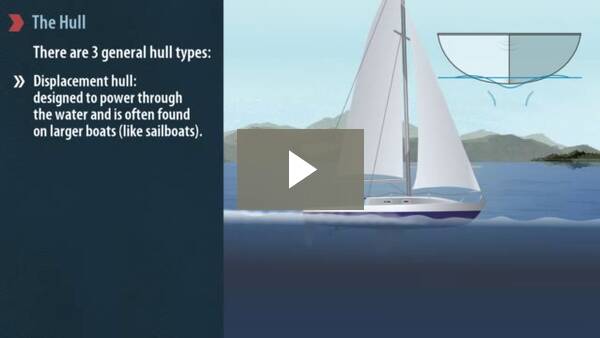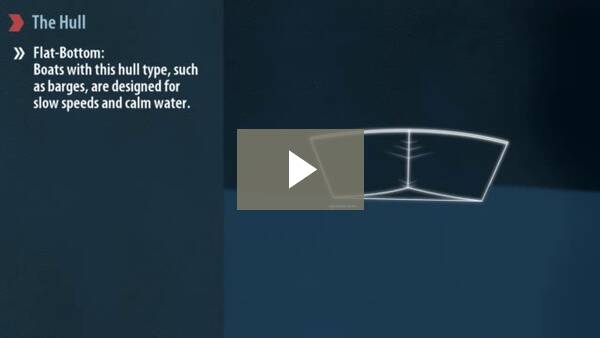The Hull
The ‘hull’ is the portion of your boat that rides both in and on top of the water. The boat hull does not include any masts, sails, rigging, machinery or equipment.
There are three general hull types:
Planing Hull:

This hull type is designed to glide on the surface of the water as the boat gains speed (most powerboats have this type of hull).
Pontoon Hull:
This hull type has two or more pontoons to create lift and flotation.
Displacement Hull:
This hull type is designed to power through the water and is most often found on larger boats.
Boat Hull Styles
The shape of your boat’s hull greatly affects the way it moves through the water. As a boat operator, you should be able to identify different hull styles and recognize the unique handling characteristics of each:
Round-Bottom:
Typical to sailboats and canoes, round-bottom hulls are less stable and tend to ‘roll’ in waves. You should be very cautious when loading, entering or exiting a round-bottom boat as it may roll easily.
Flat-Bottom:
Boats with this hull type are designed for slow speeds and calm water. Flat-bottom boats tend to be less stable than other hull types in rough water.
Deep ‘V’ Bottom:
This is the most common type of powerboat hull. This hull type allows boats to move through rough water at higher speeds and they provide a smoother ride than other hull types.
Multi-Chine Hull:
Boats that feature a multi-chine hull, such as catamarans, are very stable on the water but can be more difficult to maneuver.









